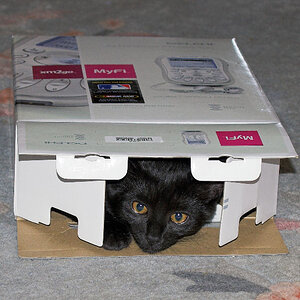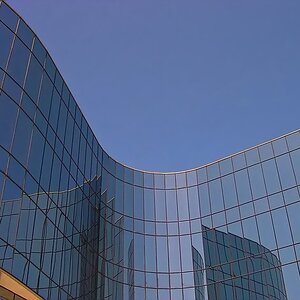Navigation
Install the app
How to install the app on iOS
Follow along with the video below to see how to install our site as a web app on your home screen.

Note: This feature currently requires accessing the site using the built-in Safari browser.
More options
You are using an out of date browser. It may not display this or other websites correctly.
You should upgrade or use an alternative browser.
You should upgrade or use an alternative browser.
what camera to buy, needs to be compact for travelling
- Thread starter joelie93
- Start date
potownrob
TPF Noob!
- Joined
- Jul 8, 2008
- Messages
- 312
- Reaction score
- 0
- Location
- Poughkeepsie, NY
- Can others edit my Photos
- Photos OK to edit
If you want a real compact setup, you'll want to avoid the DSLRs. Either a more compact bridge camera or a mirrorless camera is the way I would go about it, if I were in your position. Things to keep in mind are to not worry too much about megapixels or super high focal lengths or zoom factors (unless you really like to shoot birds or wildlife). Also, if you go mirrorless, keep in mind you are buying into a system, and will want to have an idea of which lenses (and how much they cost  ) are available for that system. Which camera(s) to get will depend on how you plan to use the camera(s), which only you know or will figure out. If you know how you plan to use the camera (as in what you plan to shoot, where, in what kind of light, etc.), please let us know so we can help narrow things down for you. Luckily, from what I've read, most newer cameras out these days are said to be very good overall. Hope that helps some.
) are available for that system. Which camera(s) to get will depend on how you plan to use the camera(s), which only you know or will figure out. If you know how you plan to use the camera (as in what you plan to shoot, where, in what kind of light, etc.), please let us know so we can help narrow things down for you. Luckily, from what I've read, most newer cameras out these days are said to be very good overall. Hope that helps some. 
 ) are available for that system. Which camera(s) to get will depend on how you plan to use the camera(s), which only you know or will figure out. If you know how you plan to use the camera (as in what you plan to shoot, where, in what kind of light, etc.), please let us know so we can help narrow things down for you. Luckily, from what I've read, most newer cameras out these days are said to be very good overall. Hope that helps some.
) are available for that system. Which camera(s) to get will depend on how you plan to use the camera(s), which only you know or will figure out. If you know how you plan to use the camera (as in what you plan to shoot, where, in what kind of light, etc.), please let us know so we can help narrow things down for you. Luckily, from what I've read, most newer cameras out these days are said to be very good overall. Hope that helps some. 
Last edited:
petrochemist
TPF junkie!
- Joined
- Mar 9, 2014
- Messages
- 1,873
- Reaction score
- 608
- Can others edit my Photos
- Photos OK to edit
There are compromises involved but you can certainly get great results from smaller mirrorless systems.
I use micro four thirds for much of my photography, having DSLR style bodies (Panasonic G5 and the older G1) & a smaller GF2 which doesn't have a built in viewfinder. The latest bodies will give have advantages over my kit - Olympus versions with in body stabilisation are certainly worth considering.
The GF2 with a pancake lens fitted can fit in a shirt pocket, with the kit lens a coat pocket is possible.
I prefer the handling of the other bodies having the camera to my eye feels more natural to me, in use they are fairly similar to my DSLR but take up less space & weigh significantly less. There are times when I prefer to use my DSLR - airshows, motorsports & birding in particular - this might be partly down to my AF lens options getting me closer with the DSLR, but the G5 gave respectable results at the touring cars last month when I didn't have space for the big guns.
IMO if space is an issue then mirrorless is the way to go. You still get the option of changing lenses to use something appropriate for the subject (a very important point for me) I'm sure there are others who find a good fixed lens 'compact camera' adequate for their needs.
If you are likely to be doing a lot of very low light photography, or work with very shallow DOF, you might find larger sensors become worth the extra bulk. There are mirrorless options in both APSC & FF sizes which will be more compact than the DSLRs with similar sensors, and the tiny Pentax Q series if even micro4/3 proves too big...
I use micro four thirds for much of my photography, having DSLR style bodies (Panasonic G5 and the older G1) & a smaller GF2 which doesn't have a built in viewfinder. The latest bodies will give have advantages over my kit - Olympus versions with in body stabilisation are certainly worth considering.
The GF2 with a pancake lens fitted can fit in a shirt pocket, with the kit lens a coat pocket is possible.
I prefer the handling of the other bodies having the camera to my eye feels more natural to me, in use they are fairly similar to my DSLR but take up less space & weigh significantly less. There are times when I prefer to use my DSLR - airshows, motorsports & birding in particular - this might be partly down to my AF lens options getting me closer with the DSLR, but the G5 gave respectable results at the touring cars last month when I didn't have space for the big guns.
IMO if space is an issue then mirrorless is the way to go. You still get the option of changing lenses to use something appropriate for the subject (a very important point for me) I'm sure there are others who find a good fixed lens 'compact camera' adequate for their needs.
If you are likely to be doing a lot of very low light photography, or work with very shallow DOF, you might find larger sensors become worth the extra bulk. There are mirrorless options in both APSC & FF sizes which will be more compact than the DSLRs with similar sensors, and the tiny Pentax Q series if even micro4/3 proves too big...
petrochemist
TPF junkie!
- Joined
- Mar 9, 2014
- Messages
- 1,873
- Reaction score
- 608
- Can others edit my Photos
- Photos OK to edit
If you want a real compact setup, you'll want to avoid the DSLRs. Either a more compact bridge camera or a mirrorless camera is the way I would go about it, if I were in your position. Things to keep in mind are to not worry too much about megapixels or super high focal lengths or zoom factors (unless you really like to shoot birds or wildlife). Also, if you go mirrorless, keep in mind you are buying into a system, and will want to have an idea of which lenses (and how much they cost) are available for that system. Which camera(s) to get will depend on how you plan to use the camera(s), which only you know or will figure out. If you know how you plan to use the camera (as in what you plan to shoot, where, in what kind of light, etc.), please let us know so we can help narrow things down for you. Luckily, from what I've read, most newer cameras out these days are said to be very good overall. Hope that helps some.

I agree with all this, but have to point out 'buying into a system' can actually be more an issue with DSLRs than mirrorless. Mirrorless cameras have a short rear flange distance making it easy to adapt other systems lenses (without AF or other lens electronics). I use my old SLR lenses on my mirrorless bodies & sometimes even use c-mount lenses intended for movie cameras. This flexibility was actually what first attracted me to the format.
If you want a real compact setup, you'll want to avoid the DSLRs. Either a more compact bridge camera or a mirrorless camera is the way I would go about it, if I were in your position. Things to keep in mind are to not worry too much about megapixels or super high focal lengths or zoom factors (unless you really like to shoot birds or wildlife). Also, if you go mirrorless, keep in mind you are buying into a system, and will want to have an idea of which lenses (and how much they cost) are available for that system. Which camera(s) to get will depend on how you plan to use the camera(s), which only you know or will figure out. If you know how you plan to use the camera (as in what you plan to shoot, where, in what kind of light, etc.), please let us know so we can help narrow things down for you. Luckily, from what I've read, most newer cameras out these days are said to be very good overall. Hope that helps some.

thanks a lot for your help, ill look into it
There are compromises involved but you can certainly get great results from smaller mirrorless systems.
I use micro four thirds for much of my photography, having DSLR style bodies (Panasonic G5 and the older G1) & a smaller GF2 which doesn't have a built in viewfinder. The latest bodies will give have advantages over my kit - Olympus versions with in body stabilisation are certainly worth considering.
The GF2 with a pancake lens fitted can fit in a shirt pocket, with the kit lens a coat pocket is possible.
I prefer the handling of the other bodies having the camera to my eye feels more natural to me, in use they are fairly similar to my DSLR but take up less space & weigh significantly less. There are times when I prefer to use my DSLR - airshows, motorsports & birding in particular - this might be partly down to my AF lens options getting me closer with the DSLR, but the G5 gave respectable results at the touring cars last month when I didn't have space for the big guns.
IMO if space is an issue then mirrorless is the way to go. You still get the option of changing lenses to use something appropriate for the subject (a very important point for me) I'm sure there are others who find a good fixed lens 'compact camera' adequate for their needs.
If you are likely to be doing a lot of very low light photography, or work with very shallow DOF, you might find larger sensors become worth the extra bulk. There are mirrorless options in both APSC & FF sizes which will be more compact than the DSLRs with similar sensors, and the tiny Pentax Q series if even micro4/3 proves too big...
Awesome buddy, thanks for your response. ill have a look into them
petrochemist
TPF junkie!
- Joined
- Mar 9, 2014
- Messages
- 1,873
- Reaction score
- 608
- Can others edit my Photos
- Photos OK to edit
Awesome buddy, thanks for your response. ill have a look into them
One thing we should perhaps have added is that ergonomics can make a huge differene to how a camera works for you. See if you can get to handle the cameras on your shortlist & preferably even explore the menus etc. If a camera doesn't fit your hand it won't work so well for you, the menus will be less of an issue as you'll learn your way around them but if frequently wanted functions are only available burried in the menus the camera may not suit you. It's certainly possible to go too small & find the user interface impractical, especially if you have large hands.
Ergonomics are very personal.
PropilotBW
Been spending a lot of time on here!
- Joined
- Feb 7, 2013
- Messages
- 2,009
- Reaction score
- 675
- Location
- Atlanta, GA, USA
- Can others edit my Photos
- Photos OK to edit
I fully agree with the small system size of the micro four thirds format. There are also some other brands to consider, Sony and Fuji.
Olympus, Panasonic, Fuji, and Sony are the front-runners in the compact system camera race. I would stick to one of these brands.
While I fully support mirrorless, in particular the Olympus Micro Four Thirds format, I think there are also some small DSLR options you should also consider. The Nikon 3000 and 5000 series DSLRs are fantastic cameras and you can find some great package deals on them from your local camera store.
Olympus, Panasonic, Fuji, and Sony are the front-runners in the compact system camera race. I would stick to one of these brands.
While I fully support mirrorless, in particular the Olympus Micro Four Thirds format, I think there are also some small DSLR options you should also consider. The Nikon 3000 and 5000 series DSLRs are fantastic cameras and you can find some great package deals on them from your local camera store.
potownrob
TPF Noob!
- Joined
- Jul 8, 2008
- Messages
- 312
- Reaction score
- 0
- Location
- Poughkeepsie, NY
- Can others edit my Photos
- Photos OK to edit
i don't remember the gf2 w/ 20mm/1.7 or even 17/2.8 fitting in any of my shirt or pant pockets, but i don't have the camera handy to check on that...one of my more recent "rigs" is the fuji x-a1 w/ the 27mm/2.8 "pancake" which does remind me of my old gf2 and 20/1.7 combo but with noticeably better performance...The GF2 with a pancake lens fitted can fit in a shirt pocket, with the kit lens a coat pocket is possible.
fjrabon
Been spending a lot of time on here!
- Joined
- Nov 3, 2011
- Messages
- 3,644
- Reaction score
- 754
- Location
- Atlanta, GA, USA
- Can others edit my Photos
- Photos OK to edit
Get a Panasonic LX100 and don't get drug down into all the minutiae people are talking about here. It's tiny, it's versatile, it produces stunning image quality.
KenC
Been spending a lot of time on here!
- Joined
- Jan 18, 2010
- Messages
- 5,700
- Reaction score
- 1,472
- Location
- Philadelphia
- Can others edit my Photos
- Photos NOT OK to edit
I agree about mirrorless or bridge, but if size/weight are the big issue it's hard to beat some of the bridge cameras. For example the Canon G16 really is pocketable. The sensor is a little smaller than what you get on a mirrorless, but in good light/relatively low ISO you'll never notice the difference.
Solarflare
No longer a newbie, moving up!
- Joined
- May 24, 2012
- Messages
- 2,898
- Reaction score
- 395
DSLRs have certain advantages:
- Reliable Autofocus even with action and lowlight
- Optical viewfinder; can be used indefinitely with no current useage (important for example for wildlife photography), no lag, especially also not in low light, no problems with artificial light (flickering problems), doesnt dazzle photographer by being too bright in low light etc
- Minimal current useage and thus very high number of images per battery possible; also no unnecessary heating of the image sensor
- Very reliable, well established product lines from Canon and Nikon; its quite safe to think these will persist
- Extreme abundance of quality lens offerings, with only few stinkers in between
- Large secondary producer market (Zeiss, Sigma, Tamron, etc)
- Very large and high quality used market especially for Nikon
- Abundance of additional equipment (flashes etc) from original and other producers
- All available systems have large sensors (minimum APS-C 24x16mm "Half format").
- For all systems theres also film cameras that can use the same lenses, if wanted.
- Pentax DSLRs unfortunately are much less well supported
- Sony (previously Minolta) "DSLRs" are now a weird alternative technology with EVF
And Mirrorless have too:
- Possibly smaller, simpler construction (but needs larger batteries)
- EVF quality is independent of sensor size, offers reliable 100% view of the final image composition, cannot blind the photographer when looking into the sun, offers review of the current white balance settings and other image shortcomings, and may offer many secondary functions such as focus peaking, life histogram etc that are not possible with optical viewfinders; sometimes also ability to flip the viewfinder up [Panasonic GX7].
- Short distance between lens and sensor allows simpler and higher quality wide angle lenses (but only if the company managed to solve the technological problems associated with steep angles from such lenses, as Leica did and as Sony managed with the A7s [but really only the A7s; the A7 and A7r cannot handle more extreme wide angles]).
- Larger AF area in the image, great support for manual focusing, contrast autofocus needs no calibration and is theoretically 100% reliable in hitting focus, phase autofocus like a DSLR is possible on sensor but the technology is not working as well as with DSLRs (speed problems, often doesnt work in low light except for Canons Dualpixels), and there is also Panasonics new advanced contast autofocus that relies on knowing the current lens and its characteristics in unsharp areas.
- All companies are young, the market has fast movements such as for example the Panasonic GH4 which leaves any DSLR in the dust when it comes to affordable high quality video (internal 4K video supported, 10 bit supported if external recorder is used)
Thus I really see no reason to get smaller than Micro Four Thirds. The Micro Four Thirds system has the best offer in lenses after the Canon and Nikon DSLRs offerings, and the camera bodies are impressively good as well, and most importantly the lenses are already VERY compact anyway.
If you really want even smaller, I recomment the Sony RX100 Mark II. I wont recomment the Mark III because the Mark III has a completely useless builtin EVF (that stalls when the camera is focusing) and while it offers more wide angle (a very good thing to have, no question) it also offers far less telephoto. The RX100 Mk2/3 offer the same sensor size as Nikon 1, but they have a high quality Sony sensor, while Nikon 1 technology requires special features of the inferior Aptina sensor.
There is ONE offer of Nikon thats worth a second look: the Nikon 1 AW1. This is a waterproof, shockproof, freezeproof camera for all the harsh environments. AFAIK theres only two lenses for that camera, though - a 28-75mm f3.5-5.6 zoom and a 27mm f2.8 prime. Well, as long as you want the lens and thus the whole system to be waterproof, shockproof, and freezeproof. AFAIK, for this class of camera, there is no model with higher image quality available.
- Reliable Autofocus even with action and lowlight
- Optical viewfinder; can be used indefinitely with no current useage (important for example for wildlife photography), no lag, especially also not in low light, no problems with artificial light (flickering problems), doesnt dazzle photographer by being too bright in low light etc
- Minimal current useage and thus very high number of images per battery possible; also no unnecessary heating of the image sensor
- Very reliable, well established product lines from Canon and Nikon; its quite safe to think these will persist
- Extreme abundance of quality lens offerings, with only few stinkers in between
- Large secondary producer market (Zeiss, Sigma, Tamron, etc)
- Very large and high quality used market especially for Nikon
- Abundance of additional equipment (flashes etc) from original and other producers
- All available systems have large sensors (minimum APS-C 24x16mm "Half format").
- For all systems theres also film cameras that can use the same lenses, if wanted.
- Pentax DSLRs unfortunately are much less well supported
- Sony (previously Minolta) "DSLRs" are now a weird alternative technology with EVF
And Mirrorless have too:
- Possibly smaller, simpler construction (but needs larger batteries)
- EVF quality is independent of sensor size, offers reliable 100% view of the final image composition, cannot blind the photographer when looking into the sun, offers review of the current white balance settings and other image shortcomings, and may offer many secondary functions such as focus peaking, life histogram etc that are not possible with optical viewfinders; sometimes also ability to flip the viewfinder up [Panasonic GX7].
- Short distance between lens and sensor allows simpler and higher quality wide angle lenses (but only if the company managed to solve the technological problems associated with steep angles from such lenses, as Leica did and as Sony managed with the A7s [but really only the A7s; the A7 and A7r cannot handle more extreme wide angles]).
- Larger AF area in the image, great support for manual focusing, contrast autofocus needs no calibration and is theoretically 100% reliable in hitting focus, phase autofocus like a DSLR is possible on sensor but the technology is not working as well as with DSLRs (speed problems, often doesnt work in low light except for Canons Dualpixels), and there is also Panasonics new advanced contast autofocus that relies on knowing the current lens and its characteristics in unsharp areas.
- All companies are young, the market has fast movements such as for example the Panasonic GH4 which leaves any DSLR in the dust when it comes to affordable high quality video (internal 4K video supported, 10 bit supported if external recorder is used)
I would ignore the Nikon 1 and Pentax Q systems for having an unnecessarily small sensor. Pentax Q has one because its a pretty old system; back then such small sensors gave a price advantage. But Nikon 1 has one only because Nikon didnt want to get into the Micro Four Thirds system. Their system has some advantages, but really unless you have very special demands its no good option.
Thus I really see no reason to get smaller than Micro Four Thirds. The Micro Four Thirds system has the best offer in lenses after the Canon and Nikon DSLRs offerings, and the camera bodies are impressively good as well, and most importantly the lenses are already VERY compact anyway.
If you really want even smaller, I recomment the Sony RX100 Mark II. I wont recomment the Mark III because the Mark III has a completely useless builtin EVF (that stalls when the camera is focusing) and while it offers more wide angle (a very good thing to have, no question) it also offers far less telephoto. The RX100 Mk2/3 offer the same sensor size as Nikon 1, but they have a high quality Sony sensor, while Nikon 1 technology requires special features of the inferior Aptina sensor.
There is ONE offer of Nikon thats worth a second look: the Nikon 1 AW1. This is a waterproof, shockproof, freezeproof camera for all the harsh environments. AFAIK theres only two lenses for that camera, though - a 28-75mm f3.5-5.6 zoom and a 27mm f2.8 prime. Well, as long as you want the lens and thus the whole system to be waterproof, shockproof, and freezeproof. AFAIK, for this class of camera, there is no model with higher image quality available.
As a former user of the Canon G11: nope. Really isnt. Unless they changed the camera size since, of course.I agree about mirrorless or bridge, but if size/weight are the big issue it's hard to beat some of the bridge cameras. For example the Canon G16 really is pocketable. The sensor is a little smaller than what you get on a mirrorless, but in good light/relatively low ISO you'll never notice the difference.
Last edited:
- Joined
- Jun 7, 2012
- Messages
- 15,469
- Reaction score
- 7,848
- Location
- Central Florida
- Website
- www.flickr.com
- Can others edit my Photos
- Photos NOT OK to edit
DSLRs have certain advantages:
- Reliable Autofocus even with action and lowlight
- Optical viewfinder; can be used indefinitely with no current useage (important for example for wildlife photography), no lag, especially also not in low light, no problems with artificial light (flickering problems), doesnt dazzle photographer by being too bright in low light etc
- Minimal current useage and thus very high number of images per battery possible; also no unnecessary heating of the image sensor
- Very reliable, well established product lines from Canon and Nikon; its quite safe to think these will persist
- Extreme abundance of quality lens offerings, with only few stinkers in between
- Large secondary producer market (Zeiss, Sigma, Tamron, etc)
- Very large and high quality used market especially for Nikon
- Abundance of additional equipment (flashes etc) from original and other producers
- All available systems have large sensors (minimum APS-C 24x16mm "Half format").
- For all systems theres also film cameras that can use the same lenses, if wanted.
- Pentax DSLRs unfortunately are much less well supported
- Sony (previously Minolta) "DSLRs" are now a weird alternative technology with EVF
And Mirrorless have too:
- Possibly smaller, simpler construction (but needs larger batteries)
- EVF quality is independent of sensor size, offers reliable 100% view of the final image composition, cannot blind the photographer when looking into the sun, offers review of the current white balance settings and other image shortcomings, and may offer many secondary functions such as focus peaking, life histogram etc that are not possible with optical viewfinders; sometimes also ability to flip the viewfinder up [Panasonic GX7].
- Short distance between lens and sensor allows simpler and higher quality wide angle lenses (but only if the company managed to solve the technological problems associated with steep angles from such lenses, as Leica did and as Sony managed with the A7s [but really only the A7s; the A7 and A7r cannot handle more extreme wide angles]).
- Larger AF area in the image, great support for manual focusing, contrast autofocus needs no calibration and is theoretically 100% reliable in hitting focus, phase autofocus like a DSLR is possible on sensor but the technology is not working as well as with DSLRs (speed problems, often doesnt work in low light except for Canons Dualpixels), and there is also Panasonics new advanced contast autofocus that relies on knowing the current lens and its characteristics in unsharp areas.
- All companies are young, the market has fast movements such as for example the Panasonic GH4 which leaves any DSLR in the dust when it comes to affordable high quality video (internal 4K video supported, 10 bit supported if external recorder is used)
I would ignore the Nikon 1 and Pentax Q systems for having an unnecessarily small sensor. Pentax Q has one because its a pretty old system; back then such small sensors gave a price advantage. But Nikon 1 has one only because Nikon didnt want to get into the Micro Four Thirds system. Their system has some advantages, but really unless you have very special demands its no good option.
Thus I really see no reason to get smaller than Micro Four Thirds. The Micro Four Thirds system has the best offer in lenses after the Canon and Nikon DSLRs offerings, and the camera bodies are impressively good as well, and most importantly the lenses are already VERY compact anyway.
If you really want even smaller, I recomment the Sony RX100 Mark II. I wont recomment the Mark III because the Mark III has a completely useless builtin EVF (that stalls when the camera is focusing) and while it offers more wide angle (a very good thing to have, no question) it also offers far less telephoto. The RX100 Mk2/3 offer the same sensor size as Nikon 1, but they have a high quality Sony sensor, while Nikon 1 technology requires special features of the inferior Aptina sensor.
There is ONE offer of Nikon thats worth a second look: the Nikon 1 AW1. This is a waterproof, shockproof, freezeproof camera for all the harsh environments. AFAIK theres only two lenses for that camera, though - a 28-75mm f3.5-5.6 zoom and a 27mm f2.8 prime. Well, as long as you want the lens and thus the whole system to be waterproof, shockproof, and freezeproof. AFAIK, for this class of camera, there is no model with higher image quality available.
As a former user of the Canon G11: nope. Really isnt. Unless they changed the camera size since, of course.I agree about mirrorless or bridge, but if size/weight are the big issue it's hard to beat some of the bridge cameras. For example the Canon G16 really is pocketable. The sensor is a little smaller than what you get on a mirrorless, but in good light/relatively low ISO you'll never notice the difference.
i would ignore the above recommendation of ignoring the nikon 1 system.
its worth taking a look at. very compact, the AF is fantastic, and it is extremely affordable.
they make some nice lenses for it, and it wont break the bank getting a nice setup.
as for the constant attacks on smaller sensors, its all about what you need and how much you want to pay.
I can get perfectly usable images from my J3 at ISO 2000. Sorry if some people cant do the same thing without the benefit of a larger sensor. Plus, the nikon 1 fits neatly into a pocket with one of the smaller prime lenses.
The biggest issue with the nikon 1 is that there isnt as much in the way of lens choices as there are for other systems, like the M4/3 system. there's also no hot shoe mount. But the image quality is quite good , and its probably the smallest DSLR system you can get.
its really impossible to give you any serious suggestions without knowing how much money you want to spend.
It isnt so much that there is a "bad" compact system as it is you need to decide which system fits your needs and budget. each system offers something a little different, and many have different tiers of camera bodies each costing a different amount and having different features.
KenC
Been spending a lot of time on here!
- Joined
- Jan 18, 2010
- Messages
- 5,700
- Reaction score
- 1,472
- Location
- Philadelphia
- Can others edit my Photos
- Photos NOT OK to edit
As a former user of the Canon G11: nope. Really isnt. Unless they changed the camera size since, of course.
They have. I have a G11 and agree that it's really not pocketable, at least not in a pants pocket (although I have done it on occasion), but they made the G15/16 much flatter.
Similar threads
- Replies
- 9
- Views
- 351
- Replies
- 0
- Views
- 193
- Replies
- 5
- Views
- 262
- Replies
- 4
- Views
- 433
- Replies
- 3
- Views
- 433

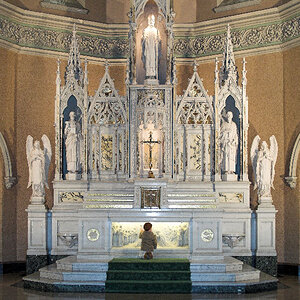
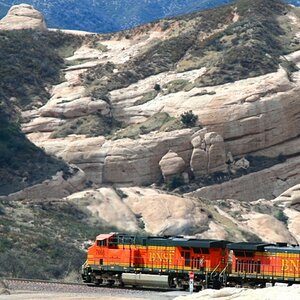
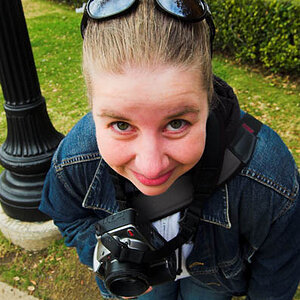
![[No title]](/data/xfmg/thumbnail/32/32930-09414fc020c2a60a456ff59a05c5ef8f.jpg?1619735759)
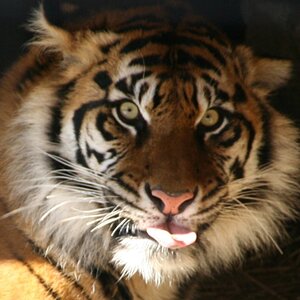
![[No title]](/data/xfmg/thumbnail/37/37930-501fdf314a05686acde53d9899f68091.jpg?1619738402)

